New CicLAvias to hit the road
June 12, 2014
L.A. has tasted CicLAvia, and it wants more.
In early 2010, as preparations were being made for Los Angeles’ first car-free, open streets event, Santa Monica organizers were brainstorming doing the same thing in their city. While CicLAvia blasted off that October, quickly drawing crowds in excess of 100,000, Santa Monica’s plans never got rolling.
Cynthia Rose, director of the bike advocacy group Santa Monica Spoke, said that despite having an active cycling and walking community, her city simply didn’t have enough resources.
“We were not as far along and just did not have the money that CicLAvia had,” says Rose.
Enter Metro.
A year ago, the transportation agency launched a grant program to fund open streets events—closing streets so people can bike, walk and frolic freely—with the goal of spreading the CicLAvia love to more places. Nearly two dozen applications were received in April, and 12 were accepted in the first cycle of grants made public this week. Pending approval by Metro’s Board of Directors, the agency will spend $4 million during the next two years to bring 12 events to places like Santa Monica, Pasadena, Long Beach and the San Fernando Valley.
Rose says she’s excited that her city will now get a chance to put its unique mark on the rapidly-expanding open streets movement, which was initially inspired by mid-1970s ciclovias in Bogotá, Colombia. (“Ciclovia” translates roughly to “cycleway.”)
“This is something that the community is ripe for and really wants,” Rose says. “Ours is going to be more like a big street festival. It’s for everyone to share the street.”
The Santa Monica gathering is being planned for spring or summer of 2016, to take advantage of the excitement surrounding the opening of Expo Line Phase 2, which will extend the light-rail train from downtown L.A. to the coast. Rose hopes the event will highlight some of the investments that Santa Monica has made to improve bicycle and pedestrian infrastructure, including the Bike Center and L.A. County’s first-ever bike share program, which should be up and running in two years.
Still, a large chunk of the grant money is slated to go CicLAvia itself, with funding recommended for six major events that the organization is producing or co-producing. CicLAvia spokesman Robert Gard said the plan is to use the Metro money to reach new locations, including the San Fernando Valley, where an event is planned for spring of 2015.
“We’ve done nine events on this side of the hill and by the time we get to the Valley it will have been 11 events,” Gard said. “With all the people who come from the Valley and beyond to our events, it just makes sense.”
The proposed Valley route still must be tested and finalized, but planners envision it going through North Hollywood, Studio City and Sherman Oaks, along Ventura and Lankershim boulevards. Those streets are home to scores of shops and eateries, a thriving arts community, beautiful vistas of the Hollywood Hills and more. The route also would connect with Metro’s Red and Orange lines and several bike paths, making it easy to get there and back.
CicLAvia would like to make the San Fernando Valley a regular destination, Gard says. Future events could target other locations further west.
The Metro grants will also help smaller towns join the open-streets movement, with tens of thousands of dollars going to places like Carson, Downey and Lawndale for more modest-scale events.
“Anybody who hopes for public consciousness of bicycling hopes a ciclovia makes it into their community,” says Lars Clutterham of the Downey Bicycle Coalition. He says that, unlike Santa Monica, “Downey is in the early stages of investing in bicycle infrastructure—there is none.” Clutterham hopes that the prospect of open streets events will prompt investment in pedestrian and bicycle improvements.
Viviana Franco is the executive director of Lot to Spot, an organization behind the Lawndale Community Bicycle Ride and Open Street Event, another grant winner. She hopes Metro’s program is a tipping point for low income communities that have largely missed out on the events. Franco says that’s upsetting because people in these communities are already cycling and walking to get where they need to go, but are unable to take full advantage of the health and community-building that can come with those activities.
“CicLAvia is amazing,” Franco says. “Let’s bring it to other neighborhoods; let’s bring it to neighborhoods where diabetes and obesity are rampant.”
Under direction from its board, Metro has sharpened its focus in recent years on “active transportation,” including cycling and walking. The agency formed a Bicycle Roundtable to collaborate with the cycling community and it has invested millions in infrastructure, with more to come.
Diego Cardoso, Metro’s executive officer in charge of active transportation, says open streets events benefit all types of transportation in the county. Not only do they get people out of their cars, he says, they also get some folks to try public transit for the first time.
“They take transit because they are going to use a bike at CicLAvia, but then they learn the places it can take them.” That, Cardoso says, makes them more likely to take buses and trains in the future.
The proposed grant awards go to the Planning and Programming committee next Wednesday before reaching the full Board on June 26.
Posted 6/12/14
A high note for mountain protections
April 17, 2014
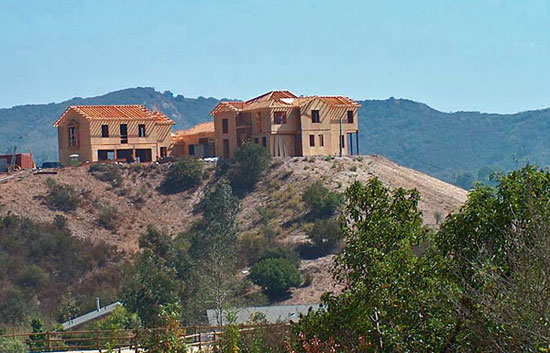
Ridgeline developments like this will be banned in the Santa Monica Mountains by the county's new rules.
In a vote that will resonate for generations, the California Coastal Commission this week cleared the way for the enactment of a wide-ranging plan to protect the Santa Monica Mountains from development that already has scarred portions of one of the region’s most important environmental and recreational resources.
The 12-member commission voted unanimously in favor of a land use plan adopted last month by the Los Angeles County Board of Supervisors, despite strong opposition from real estate development interests. The Coastal Commission vote was mandated by state law and represents a milestone in the years-long effort to preserve the mountains along the coast as a rural escape for tens of thousands of visitors each year.
The plan will, among many other things, ban ridgeline development, save oaks and other native woodlands, outlaw poisons that can harm wildlife, protect water sources, restrict lighting to preserve the night sky and prevent the opening of new vineyards, which take a toll on the land and water.
“This is a stunning achievement, to get a unanimous vote on a plan that has been on-again, off-again for three decades,” said one of its strongest advocates, Supervisor Zev Yaroslavsky, whose district includes the Santa Monica Mountains. “It’s a tribute to all the stakeholders—environmentalists, equestrians, homeowners, agricultural interests, among others—who came together to find common ground.”
During testimony before the Coastal Commission on Thursday, Yaroslavsky said he had spent two decades on the Board of Supervisors “fighting against ill-conceived developments that have desecrated” the mountains. He told the commission that it now had a “historic opportunity” to stem the damage, an opportunity the commissioners seized.
They left virtually untouched the county’s proposed plan, which was crafted by Yaroslavsky’s office and the Department of Regional Planning. The only substantive addition was a clause that expressly affirmed the right of residents to grow organic gardens through ecologically sound farming methods—a move considered necessary because of misinformation that had been spread about the plan in the days leading up to the commission’s vote.
Much of Thursday’s day-long hearing in Santa Barbara was consumed with people testifying in support of the county’s plan. But one woman used her time to blast the 11th-hour falsehoods aimed at derailing the plan by claiming, among other things, that food gardens would be banned.
“It’s just not fair to those of us who aren’t experts to be given emails that say you’re not going to be able to grow your own food,” said Janet Friesen of the Natural Resources Defense Council. “I’m here to say that I don’t think it’s right when there are paid lobbyists who are misleading people.”
Leading the campaign against the county’s plan, called a Local Coastal Program, was Don Schmitz, a consultant and lobbyist who also owns a vineyard in the Santa Monica Mountains. Under the plan, existing vineyards can remain in business, although no new ones would be allowed to open—a restriction that Schmitz criticized during his testimony on Thursday.
He disputed the negative environmental impacts of vineyards, calling the businesses a “significant draw to the Santa Monica Mountains National Recreation Area.”
“Not everybody is able or even wants to throw on a backpack and do 10 miles on the Backbone Trail,” Schmitz said of one of area’s tougher hikes.
Now that the Coastal Commission has endorsed the plan’s policy direction, it will take another vote in the months ahead on the details of its implementation. The matter will then move back to the Board of Supervisors for a final vote.
Posted 4/11/14
3 dead in possible meningitis cluster
April 2, 2014
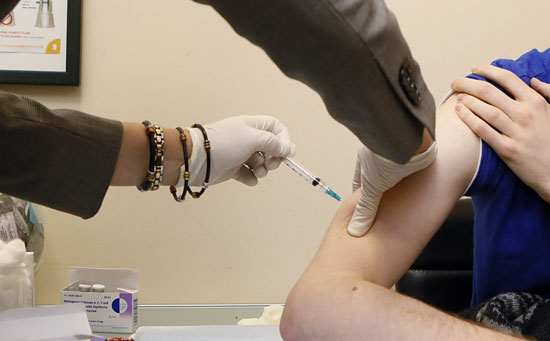
A possible cluster of meningitis cases has health officials urging vaccinations for those at high risk.
Three people have died and five others have fallen ill from meningitis in Los Angeles County since the beginning of 2014, and patterns in the cases have prompted public health officials to urge vaccinations for HIV positive men and those deemed to be at higher risk for contracting the disease.
Public health officials investigating the eight cases said that four of them involve men who had sex with other men. All three of the dead fall into that category; two of them were HIV positive and one was not.
Among the four cases in the possible cluster involving men who had sex with other men, other potential links include the fact that three of the men lived or socialized in West Hollywood or North Hollywood. The ages of the three who died are also similar—27 or 28, while the fourth, who survived, is 50.
A meningitis outbreak in New York last year prompted the health department there to urge men who had regular intimate contact with other men to be vaccinated against the disease. But Los Angeles County public health officials at the time said that was not necessary here, given a lack of connections between the 2013 cases it investigated.
This year, however, common factors among the cases are prompting a different recommendation from the Los Angeles County Department of Public Health, which consulted with the California Department of Public Health and the Centers for Disease Control and Prevention before issuing its alert.
“The facts are different,” said Dr. Jonathan E. Fielding, the county’s director of public health. “We didn’t have the same commonalities then as we do now.”
Although the risk is “very low for the general population,” county officials said that HIV positive men, as well as those who have close or intimate contact with multiple partners, find sex partners online, or share cigarettes and drugs, are at higher risk for the disease and should visit their health care provider to receive the vaccine. Those at high risk who don’t have insurance can get a free vaccination at a county facility.
The Los Angeles cases are all attributed to the strain of meningitis known as invasive meningococcal disease. It is a “sporadic and uncommon bacterial infection of the blood or the lining of the brain and spinal cord that can affect the entire body,” the Department of Public Health said a news release. “The infection can cause brain damage, hearing loss, and even death.”
It is not spread by casual contact, such as being in the same room with someone who is infected, and is less infectious than the flu. The bacteria responsible for the disease are spread by “very close exposure to sneezing and coughing or direct contact with saliva or nose mucus,” the public health statement said.
Meningitis can be treated with antibiotics but because it progresses quickly, “immediate diagnosis and treatment is imperative,” according to the news release. Symptoms include high fever, stiff neck and “altered mental status.”
Under CDC guidelines in place since 2005, all pre-teens and adolescents should receive the meningitis vaccine. A first injection is given at 10 to 12 years old, followed by a booster shot five years later in order to offer protection when the disease is most common, between the ages of 16 and 21. In addition, people who live in close quarters such as dormitories and jails are also considered high risk and advised to get vaccinated as a matter of course.
Still, Fielding said, even those who have been previously vaccinated should get another shot now if they fall into one of the current high risk groups, and if their vaccination was given more than five years ago.
Posted 4/2/14
A quicker ride over the hill
March 27, 2014

For the first time in two decades, Metro buses could be running on the 405 through the Sepulveda Pass.
When the $1 billion-plus 405 Project wraps up later this year, its new carpool lane will be the star attraction—and maybe not just for cars.
Metro is considering running a new express bus between the San Fernando Valley and the Westside, taking advantage of the new lane. It would be the first time in two decades that Metro buses have driven the 405 Freeway through the Sepulveda Pass.
The buses would offer a nonstop ride to UCLA and Westwood from Victory Boulevard and the Orange Line. They would also make stops along Van Nuys Boulevard to Nordhoff Street as far north as Panorama City.
Funding still must be identified, but, acting on a motion by Supervisor and Metro Director Zev Yaroslavsky, the agency’s board today directed staff to get moving on the studies, tests and analyses that would be required to launch the proposed new Line 588.
That includes looking at one potential major concern: whether the agency’s buses have the horsepower to maintain high speeds uphill in the fast lane. “The last thing anyone wants is to slow down traffic,” said Jon Hillmer, Metro’s director of service councils.
Express service in the carpool lanes was first suggested last fall by two Local Service Councils—appointed bodies that provide Metro with a regional perspective during the annual process of adjusting bus routes.
Metro’s staff then looked into the proposal, and the line has been taking shape ever since. Earlier this month, the Westside/Central and San Fernando Valley councils held public hearings on service changes and both recommended adding the express service, Hillmer said.
The public was supportive, too, with about 20 people speaking in favor of Line 588 at the Valley meeting.
“That usually doesn’t happen unless we are cancelling bus lines,” Hillmer said. “There is very broad support for this express bus.”
When Phase 2 of the Expo Line opens in 2016, the bus line would have another important connection; it would extend south to meet the light rail line, creating a new pathway to Santa Monica and, heading in the other direction, to downtown L.A.
Before any of that can happen, however, the bus line must be funded. Even after fares are collected, it will take at least $1.65 million to operate it—something the board could authorize as soon as April, when all of the proposed service changes come before it.
In the meantime, for Metro’s operations staff, the approval of Yaroslavsky’s motion means that Line 588 can be further studied and fine-tuned.
Because of increasing congestion, Metro’s buses haven’t taken the 405 freeway through the Sepulveda Pass for 20 years, Hillmer said. Metro Line 761 currently goes through the pass, but it travels on Sepulveda Boulevard, making several stops. (The Los Angeles Department of Transportation does have a bus that runs on the freeway, however—the Commuter Express Line 574, from Encino to LAX.)
Better transit connections between the Valley and the Westside have been on L.A.’s wish list for years. In 2008, voters approved $1 billion for a much larger undertaking that could include tunneling and rail, but that project is on hold as Metro seeks additional funding and project acceleration by partnering with private companies. In the meantime, Line 588 could start service as soon as the 405 lanes open this summer, Hillmer said.
Initially, the bus would be limited to weekday rush hours. But if enough people ride, Hillmer said, it could be expanded to include weekend service—opening a path to new destinations for entertainment, food and shopping for residents on both sides of the hill.
“They are huge economic engines,” Hillmer said of the Valley and Westside. “This opens up all kinds of wonderful opportunities.”
Posted 3/27/14
Public health’s master of disaster
March 20, 2014
When Monday’s 4.4 earthquake struck Los Angeles, Stella Fogleman reacted like many parents—quickly stretching her arms over her two young children who had crawled into bed with her.
“I was like mama chicken with my wings,” Fogleman laughs.
Those wings stretch further than most. The 37-year-old was recently promoted to the position of interim director of the L.A. County Department of Public Health’s Emergency Preparedness and Response program.
She says that Monday’s 6:25 a.m. temblor—which shook people awake but didn’t cause serious damage—was a nice boost to her mission of getting people ready for a more serious disaster. Fogleman says her instinct to protect herself and those in her immediate area was the right one.
“It’s like the oxygen mask falling on an airplane,” she says. “You have to help yourself first, that way you will be able to help your community.”
Caring for communities has long been part of Fogleman’s job description. She got her start with the department in 2001 as a public health nurse, armed with master’s degrees in public health and nursing. Most of her time was spent monitoring tuberculosis cases to enforce strict protocols aimed at preventing the spread of the disease. From there, she moved to “toxics epidemiology,” shifting focus to diseases that result from toxic exposure.
Most recently, Fogleman led the development and implementation of the Community Disaster Resilience project—an alliance between the department, individual communities and emergency response agencies. The program uses public health department facilitators to educate community organizers on how to effectively prepare, respond and share knowledge. Fogleman hopes to keep that ball rolling in her new role.
“The key is collaboration,” she says. “You’re never as good by yourself as you are with others. Together, you have a broader set of resources.”
With only a few rumbles since the Northridge quake 20 years ago, Fogleman says it’s human nature to become complacent. But lack of preparation threatens to leave the region flat-footed when the next disaster strikes. According to public health studies, less than 20% of L.A. County households currently have earthquake kits. (The department’s website has a comprehensive checklist of what to include when creating your kit.)
But if fully stocking up seems a bit intimidating, Fogleman says a good first step would be to talk to neighbors about disaster strategies. Then, she says, you can begin to prepare and plan together.
It’s also important to secure homes by tethering tall furniture and securing books and glasses that could fly from shelves and cupboards, Fogleman says. People should know how to shut off gas and water in case of leaks, and families should go room-to-room to identify “safe places” to duck, cover and hang on—away from windows and under the cover of a sturdy table or desk, if possible. “That way you will subconsciously go to that spot,” Fogleman said.
Having the right supplies on hand can be a crucial. In the case of a widespread disaster, infrastructure may be damaged, cutting people off from the rest of the world. When an emergency response is spread over a large area, help might not come for days or even as long as two weeks, Fogleman says. Knowing first aid and CPR can help save lives if anyone is seriously injured.
As time goes on, people usually want to communicate with friends and family who live elsewhere. Having multiple ways of doing that—cell phones, internet and land lines—improves your chances of being heard. Fogleman says people can visit the Red Cross’s website to list themselves as “Safe and Well” so out-of-towners know they’re okay.
For those who want to go the extra mile, Fogleman recommends bereadyla.org, which has tools for preparing and community organizing. The Los Angeles County Sheriff’s Department provides Community Emergency Response Team training on how to respond to all kinds of disasters.
In the event of a damaging earthquake, the Department of Public Health would work in the background while first responders tackle the situation in the streets, Fogleman says. It’s her department’s responsibility to minimize a disaster’s impact over time, addressing such things as food-borne illnesses and checking buildings for safety. “If we’re doing our job well, no one hears about us,” she says.
However, that’s something she hopes to change by highlighting the positive things the department does to help people during an emergency. She wants to improve her program’s outreach by increasing the number of its publications and creating a newsletter. Getting the word out is one of the cheapest—and most effective—ways of preparing people for the worst, Fogleman says.
Despite the serious nature of her job, Fogleman approaches things with a positive attitude that comes, she says, from a genuine love of public service.
“There’s no question that what I do every day helps people,” she says. “There’s a real satisfaction with that.”
Posted 3/20/14
Exposing a mountain of deceit
March 12, 2014
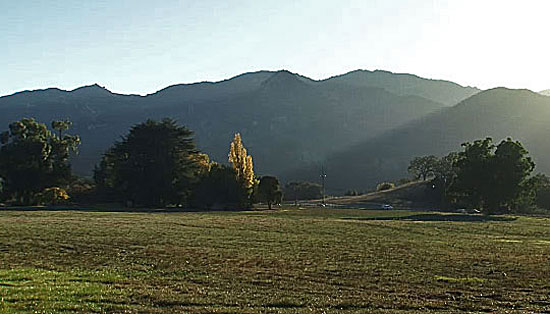
Opponents of a plan that would protect the Santa Monica mountains for generations to come have launched a misinformation campaign to advance their own vested interests.
Last month, the Board of Supervisors adopted a widely-hailed, landmark plan to preserve one of our region’s most precious natural resources—the Santa Monica Mountains. Under this blueprint for environmental stewardship, streams would be protected from pollution, ridgelines would be spared the scars of unrestrained development, historic groves of native oaks would be saved from the ax and a public in need of recreational opportunities would forever find a serene haven in the hills above Los Angeles.
This plan—known as a Local Coastal Program, or LCP—resulted from the work of an unprecedented coalition of groups and individuals, including the Sierra Club, Heal the Bay, the Santa Monica Mountains Conservancy, the Las Virgenes Homeowners Federation, the California Coastal Protection Network, State Senator Fran Pavley, Assemblyman Richard Bloom and a broad cross-section of the equestrian community. The Board of Supervisors approved the LCP by a 4-1 vote amid an outpouring of support.
But now, as the California Coastal Commission prepares to consider the plan, a disinformation campaign has been launched by a small army of lawyers and lobbyists, representing developer clients who do not want to play by the rules. They are shamelessly placing their self-interest above the public interest. And they are advancing this agenda not by stepping forward themselves. They are hiding behind a smokescreen they created by falsely generating fears among equestrians, backyard gardeners and others that the plan would rob them of the things they hold dear.
Make no mistake, these big-moneyed real-estate interests have one thing in mind: to derail the LCP so they can profit from an environmental jewel that, in the process, would be destroyed and lost to us all.
I encourage you to read the plan yourself here. In the meantime, here is the truth behind the more blatantly false misrepresentations that have surfaced in recent days:
FICTION: The LCP bans the riding, boarding and training of horses in Malibu.
FACT: The proposed plan specifically supports the riding, boarding and training of horses in the Santa Monica Mountains. It calls for a substantial increase in the current areas where such activities are permitted and would allow homeowners in unincorporated areas to board horses in their backyards, which is now prohibited by county codes. What’s more, the plan encourages the establishment of equestrian-friendly trailhead parking and staging areas to promote low-cost public access to trails. The plan clearly states that it seeks to preserve the equestrian traditions of the Santa Monica Mountains.
FICTION: The LCP was sprung on an unsuspecting public.
FACT: For months, the county and my office engaged hundreds of individuals and groups during the preparation of the LCP, resulting in the unprecedented coalition that coalesced behind the plan. Indeed, many of the plan’s provisions are the result of the thorough and constructive input we received from residential, environmental and equestrian stakeholders. Moreover, for six weeks before the Board of Supervisors’ vote, the LCP was posted online and placed in local libraries and government offices. It was also presented to more than 30 homeowner organizations, the Santa Monica Mountains Trails Council, equestrians, environmental organizations, representatives of neighboring cities and counties, and numerous other organizations.
FICTION: The LCP would commercialize the rural character of the Santa Monica Mountains.
FACT: The LCP’s guiding principle is that “resource protection has priority over development.” To that end, the plan would cut by nearly two-thirds the area zoned for commercial development under the plan. In fact, less than one percent of the Coastal Zone is slated for commercial use. Among other things, the LCP prohibits: ridgeline development, long access roads that carve-up natural hillsides, the blocking of streams, commercial vineyards and the destruction of oaks, sycamores and other native woodlands. It also strictly limits grading and imposes lighting restrictions to preserve the night sky. In addition, thanks in large part to the efforts of the county, state and other public partners, more than half of the Coastal Zone has already been acquired as public parkland on which development is restricted.
FICTION: The LCP would turn the City of Malibu into another resort town ridden with chain stores, severing the town’s connection to its rural origins.
FACT: The LCP does not in any way govern land use or business within the City of Malibu. It addresses the roughly 50,000 acres of unincorporated territory within the Coastal Zone north of the City of Malibu, between Ventura County and the City of Los Angeles. The City of Malibu has its own LCP, which governs land use inside the city. Land use decisions in the City of Malibu are made by the Malibu City Council. Land use decisions in the unincorporated county are governed by the Board of Supervisors. Neither agency has jurisdiction over the other.
FICTION: The LCP prohibits backyard fruit and vegetable gardens and bans vineyards.
FACT: The LCP explicitly protects the right of all new and existing homeowners—as well as schools and other community uses—to maintain fruit and vegetable gardens. At the urging of many environmental leaders, the LCP would prohibit new commercial vineyards because of their serious impact on water quality in our streams, beaches and the Santa Monica Bay. The policy prohibiting new vineyards would also prevent the loss of sensitive habitat and avoid concerns over the industrial spraying of pesticides near homes and the areas where tens of thousands of visitors come each year to enjoy the region’s beauty and recreational opportunities. Nevertheless, out of fairness to existing vineyard owners, legally established vineyards that currently exist would be allowed to remain under the LCP.
FICTION: The LCP will take away your dogs.
FACT: This is patently—and ridiculously—false. The LCP maintains the same rules for dogs as we have in the county code today.
FICTION: The LCP will add fees and costs.
FACT: The LCP would save the average property owner seeking permits thousands of dollars. Under the status quo, homeowners who want to build within the Santa Monica Mountains Coastal Zone must first go to the county to get an “approval in concept.” Once they finish the county process, they must proceed to the Coastal Commission for a public hearing, further review and more fees. Once the LCP is certified by the Coastal Commission, however, property owners will have a one-stop shop at the County of Los Angeles and they will no longer have to go to the Coastal Commission, pay a second set of fees and go through a second layer of governmental review.
So, there you have it. Those are the simple facts, which I urge you to verify for yourself.
The Santa Monica Mountains LCP is the product of years of meticulous analysis and negotiation. Its opponents want to delay and ultimately kill this important plan. And they are using deceitful tactics—including dishonesty—to try to achieve those goals. This cannot be allowed to happen.
The Santa Monica Mountains represent one of the largest remaining unspoiled coastal resources in Southern California. Future generations will not forgive us if we fail to seize this opportunity.
Posted 3/12/14
Looming train shortage at Metro
March 12, 2014
As two Los Angeles light rail lines race toward completion, there’s trouble ahead on the tracks. Unless train car production can be significantly accelerated, there won’t be enough vehicles to serve both new lines—Phase 2 of the Expo Line to Santa Monica and the Gold Line Foothill Extension to Azusa—if they open as scheduled in late 2015 and early 2016 respectively.
Metro is so concerned about the problem that it’s dispatching a delegation to the manufacturer’s headquarters in Japan later this month in hopes of finding a way to speed up production—a tall order for a company that the agency acknowledges is on track with the aggressive schedule mutually agreed to under its contract.
So, with a likely initial shortfall of about 50 train cars, the issue presents some tough decisions for Metro, all of which are likely to be unpopular with the traveling public. It could delay the new lines’ openings, operate them with shorter, more crowded trains, offer less frequent service, or redeploy cars from elsewhere in the system, thus spreading the pain more broadly.
The shortage is expected to be most severe in the first months of operation for the two new extensions, with steady improvements coming as new rail cars arrive throughout 2016. But even the prospect of a relatively short-lived disruption has been enough to strain the relationship between Metro, which will operate the lines, and the two construction authorities charged with successfully completing the projects.
Samantha Bricker, chief operating officer for the Exposition Light Rail Construction Authority, expects Expo Phase 2 to be ready for testing in the summer of 2015, which would make it possible for the line—running from Culver City to Santa Monica— to serve the public as early as December, 2015. But she’s worried that the train car shortage could impede that schedule and disappoint passengers looking forward to jumping aboard the westernmost phase of a light rail line that’s already attracting large numbers of riders.
“If these projects are done on time and there are no trains there, the public is going to go nuts,” Bricker predicted.
Metro’s Gold Line Foothill Extension, running from Pasadena to Azusa, is expected to open just two months later. Habib Balian, chief executive officer of the Foothill Construction Authority, said he, too, is worried that his line’s opening will be delayed or marred by diminished service in the early months.
“It’s going to sit there and cobwebs are going to grow until Metro starts service, or they are going to put wimpy service on all the rail lines,” Balian said, referring to the possibility of importing rail cars from elsewhere in the system.
The roots of the problem go back to 2010, when a previous manufacturer, AnsaldoBreda Inc., failed to meet the specifications for an earlier order of Gold Line cars, according to Richard Hunt, who manages Metro’s rail car procurements.
Given the time crunch, Metro’s chief executive officer, Art Leahy, urged Board members to act quickly and, in April, 2012, after a competitive bidding process, the Board awarded a new contract to another company, Kinkisharyo International, LLC. After Kinkisharyo landed the contract, it relocated its U.S. headquarters from Boston to El Segundo and is currently building a facility in Palmdale where the final assembly of the Metro rail cars will take place.
Metro officials say they are confident that Kinkisharyo can deliver, but due to the time lost after parting ways with AnsaldoBreda, the process is now a year behind schedule.
No easy solutions are apparent, but Metro is brainstorming fixes and contingency plans, said Brian Boudreau, an executive officer who oversees major capital projects. All options remain on the table.
On March 27, Metro Board Chair Diane DuBois and Pam O’Connor, chair of the Expo Authority and a member of Metro’s Board of Directors, will join Hunt on a delegation to Kinkisharyo’s headquarters in Osaka, Japan to check on the progress and see if anything else can be done.
Hunt said the agency already has submitted a formal request to Kinkisharyo to speed delivery, but acknowledged that the prospects of that are slim.
Kinkisharyo’s president, Teiji Tani, agreed.
“The schedule that Kinkisharyo International and Metro agreed to was and is very aggressive,” Tani said in an email. “Given the challenges we have been facing, it’s unlikely that the schedule can be accelerated on the initial 78-car order.”
The current contract calls for delivery of 78 light rail vehicles at a price of $299 million, with options for additional cars for Metro’s expanding light rail network that could bring the total value of the contract to $890 million. The agreement includes what Hunt called an “unprecedented” delivery schedule—about twice as fast as normal. Kinkisharyo agreed to deliver the first 78 cars at a rate of 4 per month, beginning in September, 2015. The final installment wouldn’t arrive until January 20, 2017, about a year after the rail lines are expected to open.
Metro’s chief of operations, Debra Johnson, demurred on the question of how big the impact on transit riders could be, but said that “all options have to be assessed.”
“Here we are, stewards of the taxpayers, and we are going to do our due diligence to make sure they are least-impacted,” Johnson said.
Metro’s Board of Directors is scheduled to get a status update on the situation in April, including feedback from the delegation to Japan as well as contingency plans for running the lines without all the cars.
In the meantime, Kinkisharyo officials say they are keeping things moving as fast as possible.
“We are finalizing design, setting up our assembly plant in Palmdale and starting to produce the initial two cars, also known as test cars,” Tani said. “We’ll soon start hiring 100 additional employees for that plant.”
Posted 3/12/14
Dial M for Metro WiFi
February 25, 2014
Hold the phone: after years of study, a project to bring WiFi and cellular service to L.A.’s subway system is now underway.
The project is on track for completion by January, 2016. But Daniel Lindstrom, Metro’s manager of wayside communications, said that work will likely take place in stages, with segments of the system—such as stations in the downtown L.A. business district—potentially coming on line earlier.
Work began in January. For now, they’re dealing with what Lindstrom calls the “techie stuff,” like where to locate a 2,000-square-foot “base station hotel” that will house equipment for cell phone providers that join the Metro network.
The company chosen to develop and operate Metro’s system, InSite Wireless, has already brought WiFi and cell service to Boston’s decades-old subway system, known as “The T.”
“If you can implement it in a 100-year-old subway, you can definitely implement it on a modern system like ours,” Lindstrom said.
Lindstrom said he could not estimate how many people will use the service when it is up and running in Los Angeles, but noted that there is particularly strong demand among younger passengers, whereas older riders tend to have more of a take-it-or-leave-it attitude.
“If you’re in your 20s, like my kids, they say, ‘Why don’t you have cell phone coverage in the subway? What’s wrong with you?’ ” Lindstrom said. “I’m just about to hit 50, and I think it’s nice to have but I don’t necessarily expect it. And if you’re in your 80s, you say, ‘Just forget about it.’ ”
Riders of the Red and Purple subway lines won’t be the only beneficiaries of the new service; it will also cover below-grade portions of the Blue, Gold and Expo lines, along with the future Crenshaw Line.
Lindstrom said that people with data plans through their individual cell phone service will be able to use their devices on Metro free of charge. Those who don’t have such plans will pay as they go when they sign into the network on a platform or in a subway car, much as they currently do on airplanes—or in other underground systems around the world.
“London makes you pay $3 a day,” Lindstrom said.
Lindstrom said Metro is hoping to offer an early taste of what the system will offer by having Union Station’s WiFi up and running by its 75th anniversary later this year.
When the whole system is online, Metro will receive at least $360,000 a year from the program, and its share of revenue from InSite could potentially be far greater. A report last year to the agency’s Executive Management Committee said that Bay Area Rapid Transit in northern California reported $2 million a year in new revenue after it installed cell and data service.
The service also will enhance security by enabling passengers to call for help if needed. And, Lindstrom said, it will allow sheriff’s deputies and security officers to view and respond to real-time video feeds.
“It’s a force multiplier,” Lindstrom said. “It will allow deputies to see things as they are going on.”
Posted 2/21/14
Metro’s bicycle brain trust
February 25, 2014
There was once a time, not long ago, when bicyclists weren’t much more than a squeaky wheel to Metro—and not in a good way.
What a difference four years makes.
On February 19, 2010, the cycling community got a seat at the transit table when Metro hosted its first Bicycle Roundtable meeting.
It was the beginning of an important collaboration—one that would lead to some major improvements for cyclists within the Metro system. But you wouldn’t have known it from the rocky start of the process, as cyclists started engaging warily with a government agency that hadn’t always been so welcoming.
“They distrusted us and were very assertive about issues we needed to address and policies we needed to embrace,” said Diego Cardoso, Metro’s executive officer in charge of the bicycle and pedestrian program. “Those were the days when Metro was transitioning as an agency in terms of mobility and bicycling in L.A. County.”
Intended as a forum for bike advocates to exchange ideas with the transit agency, the meetings grew out of a rising tide of vocal cycling activism. “The bicycle community was demanding in terms of getting Metro, cities and the county to deal with issues of how to improve mobility for bicycles,” Cardoso said. “We said ‘Well, let’s bring them together.’ ”
Though contentious at first, the discussions soon evolved in ways that have helped shape the emergence of cycling as a major mode of transportation in the county.
One of the earliest results was the end of a ban that kept bikes off trains during peak periods of travel. What’s more, the agency has even removed seats from rail cars to clear more room for cyclists to bring their rides aboard. And Metro has more than doubled the share that bicycles get in its competitive Call for Projects program, which funds local initiatives with regional significance. (Cycling programs now get 15% of the pot, which in the last cycle totaled $199.4 million.)
The collaboration also has led to new public education programs promoting safety. The highly visible “Every Lane is a Bike Lane” campaign grew out of roundtable discussions, and last summer, Metro launched bicycle safety classes taught by advocacy groups that attend the meetings.
On the political side of things, Metro’s Board of Directors has provided support as well, officially recognizing bicycling as an official “mode of transportation,” putting it on equal footing with motorized travel.
Next up: bike-sharing.
“Bike share is a good example where they basically asked ‘What do you think?’” said Eric Bruins, director of policy and planning for the L.A. County Bicycle Coalition. “Feedback from the roundtable was very clear—there should be one regional vendor and we want to see a strong leadership role from Metro.”
The agency, spurred by a motion by Mayor Eric Garcetti, Supervisor Zev Yaroslavsky and others, stepped in after the city of L.A.’s bike share program foundered and took the lead in creating a county-wide bike sharing plan. In December, Metro’s board expanded the agency’s role, directing it to fund the plan by teaming up with local jurisdictions.
An update on the bike share project’s progress—including input from the roundtable group—is scheduled to come before Metro’s board in April. According to Cardoso, the agency is in the process of contracting with an outside company to help implement the program, with Los Angeles, Santa Monica and Pasadena serving as pilot cities.
Another upcoming project aims to build five new “bike hubs,” structures that will offer secure parking, repairs and other resources, at major public transportation hotspots. The first one, at El Monte Station, will open later this year. Other hubs are planned for Union Station, Culver City Expo Line Station and two Red Line stations—Hollywood/Vine and North Hollywood.
The roundtable’s most recent meeting earlier this month drew a mix of cycling aficionados, staff from government agencies and the offices of elected officials and even a couple of unaffiliated members of the public. Attendees came from all over: Santa Monica, Montebello, even Orange County.
One regular participant, Dennis Hindman, 61, of Toluca Lake, said he’d like to see more folks from the public take part in helping the agency get more of a grassroots perspective. “It gives you the insight of actual experience,” he said. “You may have missed something from a practical standpoint that just won’t work in real life.”
Miguel Ramos, a volunteer for Multicultural Communities for Mobility, was attending for the first time. Ramos’ mission is to promote inclusion of all of the region’s diverse communities in bicycle projects—something he said is simply “not happening in low income communities” nationwide.
“These communities already have a growing bicycle culture,” Ramos said. “It’s about recognizing that fact and allowing their voices to be heard.” To achieve that, he said, Metro must increase outreach in multiple languages.
For his part, Bruins of the Bicycle Coalition said he would like to see a higher level of participation by a broader range of Metro staffers.
“Metro has many departments,” Bruins said. “We’d like to see other departments come to the bike roundtable because it’s really that exchange of ideas that’s helpful. The folks that are designing the next set of light rail vehicles came and presented designs of how bikes can be stored on board. Those are great discussions because they allow departments that don’t usually deal with the bike community to interface with us.”
Even today, bicyclists and the agency don’t always see eye-to-eye. Many cyclists are pushing for the installation in rail stations of “bike channels”—deep grooves next to stairways to make it easier for bikes to get up and down. That, however, would be expensive, and retrofitting existing stations with the channels would be even costlier, said Laura Cornejo, who oversees Metro’s Active Transportation Program and has led the past two roundtable discussions.
“Advocates are pushing for Metro to do more and be a little more aggressive,” Cornejo said, “but we have to be strategic and take baby steps to get to the final destination.”
But, she added, the days of bicycles as an afterthought in L.A. are long gone.
“All the trends point to bicycling growing,” Cornejo said. “We’ve seen it on rail, where bicycle boarding has increased about 40% in just one year. I don’t see the trend reversing or slowing.”
Posted 2/25/14






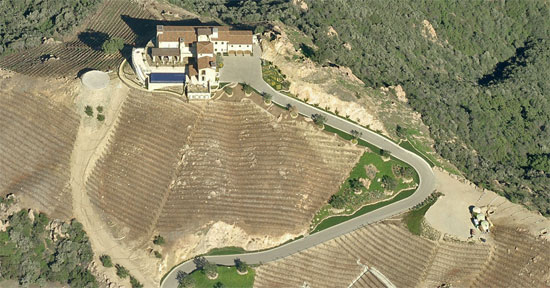
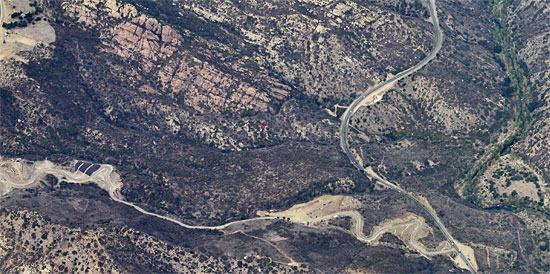
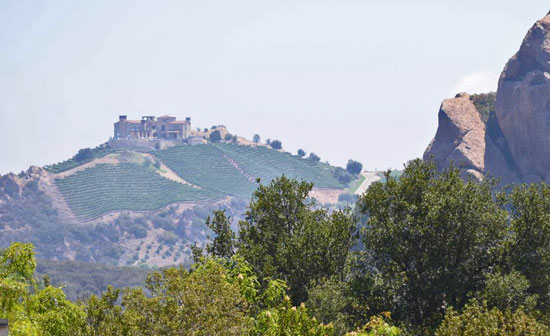
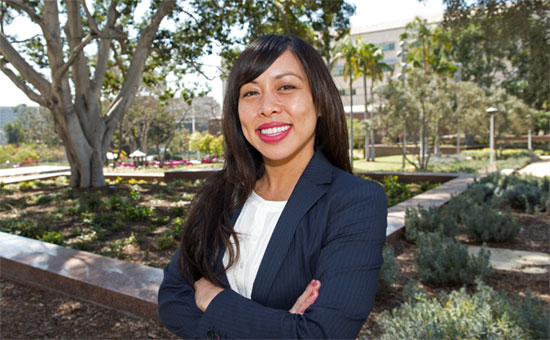
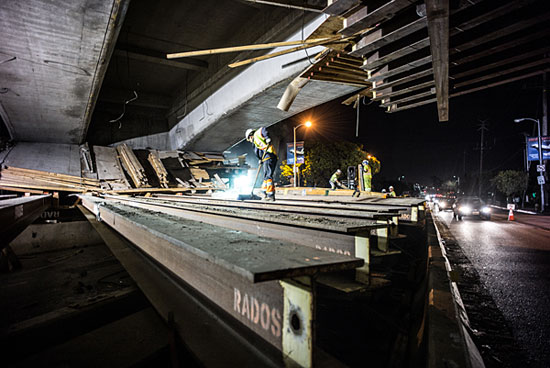
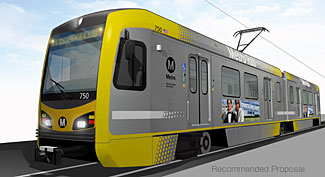

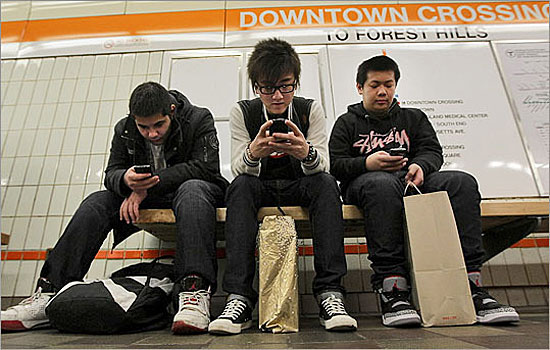









 405 bridge work causes a stink
405 bridge work causes a stink

